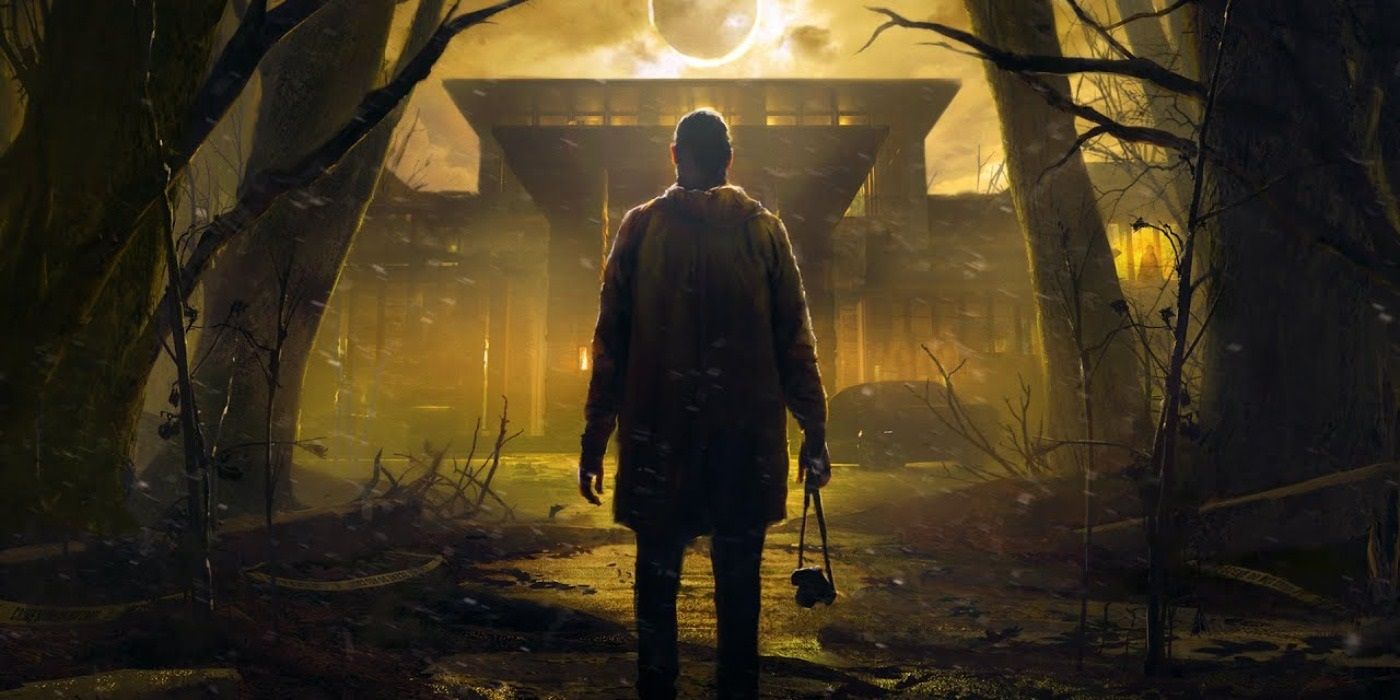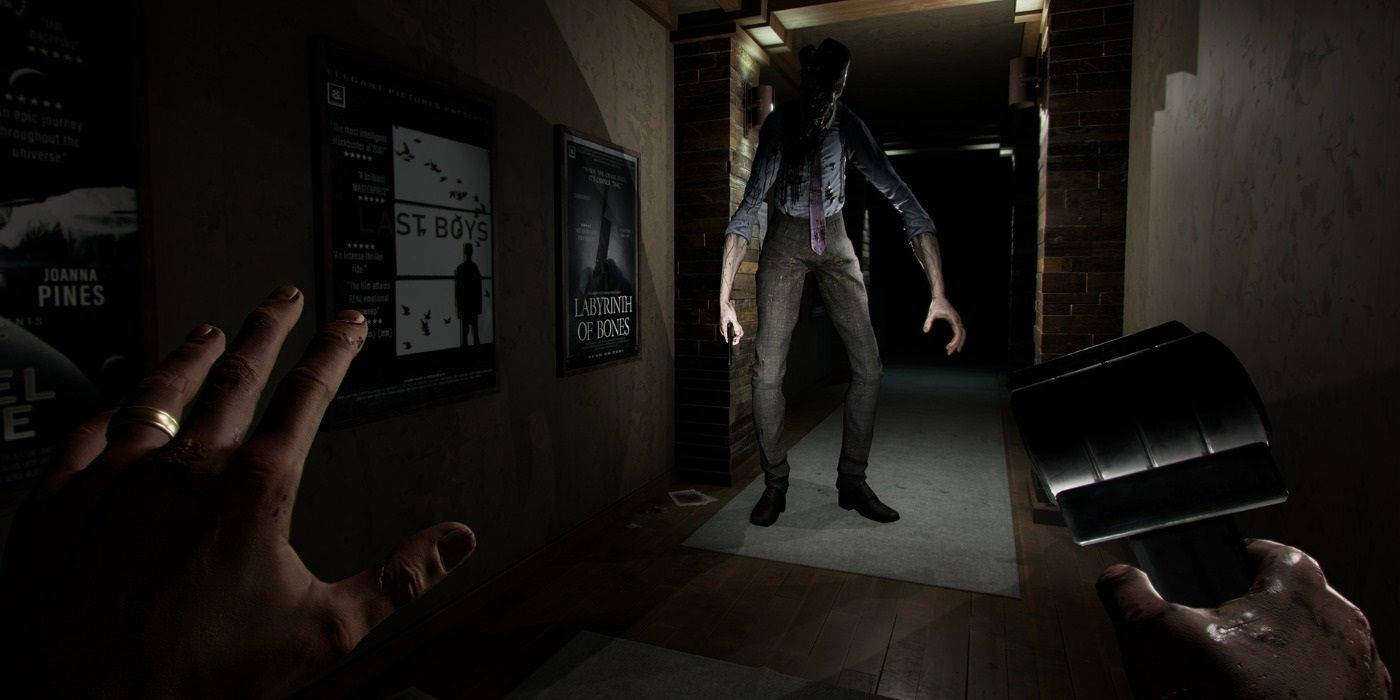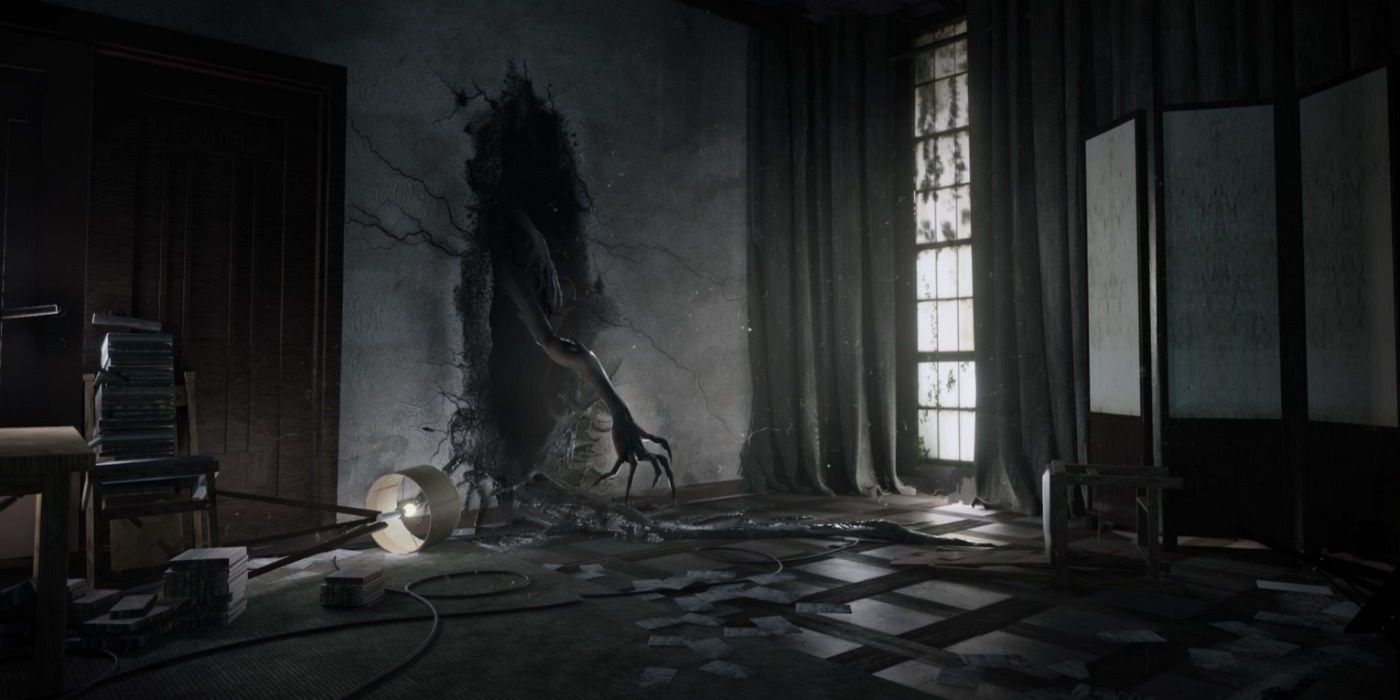
Wraith: The Oblivion - Afterlife is an upcoming VR horror game that adapts one of the scariest parts of the World of Darkness franchise into a single-player narrative experience. Afterlife is a horror game with a focus on stealth, where the main character is a Wraith, who must explore the location where they died while avoiding a fate worse than death at the hands of wandering Spectres.
The World of Darkness franchise is a tabletop RPG with a shared universe based on different creatures from the horror genre. Perhaps the most well-known of these is Vampire: The Masquerade, where players take on the role of the undead as they struggle to keep their existence a secret from mortals. One of the games that was part of the World of Darkness was Wraith: The Oblivion, where players took on the role of people who recently died, attempting to survive in the nightmarish existence between the land of the living and the dead. Wraith is a hard game to get into for group tabletop games, but it's the kind of concept that has promise when adapted as a single-player video game.
Wraith: The Oblivion - Afterlife is being developed by Fast Travel Games for Oculus Quest & Rift, Steam VR, and PlayStation VR. Screen Rant recently spoke to director Erik Odeldahl about adapting the tabletop RPG into a video game and introducing the world at large to the scariest corner of the World of Darkness.

So, Erik, could you tell us a little bit about Afterlife?
Yes, it's the first VR game, actually the first video game based on Wraith: The Oblivion. We've been building that for quite a while now, and it's soon ready for release. It's a first-person narrative horror game that takes place in the Barclay Mansion, just outside Los Angeles, after the protagonist's death, of course.
You’ve said in the past that Wraith: The Oblivion is something that you’ve wanted to turn into a video game even before you were approached to create Afterlife. What is it that drew you to Wraith, as it’s one of the lesser-known World of Darkness titles?
When we first started Fast Travel Games in 2016, I actually created a one-page pitch for Wraith: The Oblivion, a very different game than this one. That one never turned into anything. But later our friends at Paradox, the World of Darkness team that we know really well, they came to us and they asked "What do you think of this, what do you think of Wraith: The Oblivion, do you think you could make a good game based on that?" I was just... "Yes, yes we can." So, it was actually Paradox that approached us first, and then we worked on a pitch which is basically us trying to introduce the world of Wraith to players. It's not one of the most known of World of Darkness IPs, it's also considered one of the harder-to-play pen and paper RPGs, with the Shadow and stuff like that. So, basically, I dived down into the books and started reading up on it and then we created a pitch, and Paradox really liked it. That's basically where we started.
Wraith is a very heavy roleplaying game, but it does have its own mechanics. How did you integrate them into the video game?
So, the big thing for me in Wraith is the interaction you have with your Shadow. I mean, that's the number one thing. What we've done there is basically to let the Shadow be the player's companion throughout the game, commenting on things you do, sometimes guiding you in the right direction, sometimes not guiding you in the right direction. Basically, we think of him as your dark subconscious, the one who really really doesn't want you to succeed. The Shadow's goal is basically to drive the player down into oblivion, to get the player to fail. He's also your only companion, and you actually have to trust him sometimes. We haven't really translated the mechanics of the pen and paper RPG, but rather the themes for this game. So we focus on the interaction between the player and the Shadow. There's also the fact that you are a Wraith and we play in VR, we really wanna let players be a Wraith and use some Wraith powers. We don't call them your "Arcanas" in the game, because we want to introduce the players to the world and to the Shadowlands. So we basically don't dig too deeply into that whole part of the mythos.
The World of Darkness tabletop game’s setting is currently being fleshed out as part of the new fifth edition, and we haven’t heard much about the plans for new Wraith content. How much freedom did you have to use Wraith lore from the old editions of the game?
Yes, we were free to use anything we wanted, but we were also free to come up with new ideas. We have a great relationship with the World of Darkness team. There might be stuff you see in this game, I don't really know, but there's stuff you see in this game that I hope might show up in future versions, etc. There's some really interesting stuff in the old books from the '90s. We've tried to hint at it, and hopefully, what we stay really close to, we're basically staying in the Shadowlands for this game, close to the place where the protagonist died. In this game, we don't dig too deep into the whole Stygian Abyss and stuff like that.
Now, when you’re doing anything ghost-related in a World of Darkness game, you’re immediately going to be compared to the excellent Ocean House Hotel quest from Vampire: The Masquerade – Bloodlines, where the player has to explore a haunted hotel. Did you experience this before starting work on Afterlife?
Yeah, of course we played that. I think that the Ocean House is really really good, I think it's still actually scary if you play it. What we said was "Let's not recreate that, but focus on our own thing." It is a really scary mission in the Bloodlines game and what I think it does really well is build tension without being super dangerous all of the time. I think that is part of the inspiration for our game. We really wanna focus on building tension and building terror and horror over time, rather than just scare people with cheap jump scares.
Afterlife is being released for different headsets on PC over the next few months. Has a release window been set for the PlayStation VR version of the game?
We've said we're going to release the PlayStation VR version this year, but we haven't set a specific date yet. The reason we're doing this is we're a fairly small team. We're pretty big for a VR studio, but we still wanna focus on each release separately to deliver each release the best we can.

What’s the average playtime for Afterlife?
So we estimate somewhere between seven to ten hours, depending on how much of a completionist you are. Some people are gonna take longer and others are more well-versed in horror games and stealth games, as a consequence of that, they'll have a shorter play time.
VR has become a popular medium for horror games in recent years. What do you think is key to making an effective horror game in VR, especially with the current limitations of the medium, such as character movement?
We implemented a lot of comfort options for the player, this is a game where the default movement in Afterlife is smooth locomotion, but we've implemented a lot of comfort options so that players that are susceptible to different motion sickness can play it in a variety of different ways. I think in VR, what you really wanna do is, you want to be in the world, you want your presence really in the world, which in our case is the Barclay Mansion. We really want the player to explore that place, so I think exploration is super important in VR and it's where you're looking over things and to the side, letting the player be there. Also, to make sure that all of your audio is fully localized and really uses this 3D space around you. I think audio is, if not the most important, then certainly one of the most important things for horror in VR. It's super important. I also think that VR is very easy to do cheap jump scares and scare people, but we've chosen not to go down that path. I think it's much more interesting to build tension slowly and build that up until it becomes... you're really close to the breaking point and then release that tension, let it flow. Try to think of this game as how really good horror movies are structured. Afterlife is definitely not an action game, it's a stealth game, it's about being fairly powerless against some of the enemies.
Sony recently announced its new VR hardware for the PlayStation 5. I was wondering what your opinions were on Sony’s direction for VR, especially in regards to the new controllers used in the upcoming PS5 VR set?
Yeah, I think tactile feedback is a great focus. I think what we've worked very hard with, Fast Travel is about player presence in the world. We want each interaction to feel as real as possible, to trick the brain that you're lifting something and you're throwing something, etc. To focus on feedback and tactile delivery is a great choice and I'm really happy that they're going down that path.
VR gaming is still comparatively niche. What do you think it needs to do to really break into the mainstream? Is there something that needs to change with the hardware, or is it just missing that killer app?
I think there actually are a few killer games out there. Afterlife soon I hope (laughs). I mean, there are other games that are really good. I also think that it used to be expensive, some headsets are really expensive, and then you need a really powerful PC, etc. I think the standalone headsets, the cheaper headsets, more comfortable headsets, more focus on different comfort options for players. More and more games are released and I think a platform needs a lot of games for a lot of different players. It needs horror games, it needs action titles, it needs rhythm games, it basically needs really good games from different genres. I think we're rapidly approaching that in VR.
In Afterlife, your main character is dead. How do you ramp up the horror when your character has already died, because a lot of the tension in games comes from surviving until the end of a stage? How do you do that when the character is already dead?
So, there's always something worse than you right (laughs), even if you're a Wraith, you don't have to be the classic spooky ghost. What we do is, we place the player in the place, a building or location with a horrifying history. We let the player get exposed to that and explore that, and gradually put the pieces together. We also put the player into contact with Spectres, Wraiths who have lost all their humanity and all of their connection to the living world. These are creatures of pure evil. The player in Afterlife does not have any offensive means at all. All you can do is defend yourself a bit, but the best strategy is to stay out of their sight, because they are extremely lethal and dangerous. There's a lot of horror coming from the Spectres and their backstories and how did they end up the way they are. You can't just build scary models and characters, you need to give them personality and that's what we've done, tried to give them good personality and when you meet them, you should be able to see what they were when they were alive and why are they this way, and that's where the horror really comes in.
Wraith: The Oblivion - Afterlife is due to be released for Oculus Quest & Rift on April 22, for Steam VR on May 25, and PlayStation VR in 2021.
from ScreenRant - Feed https://ift.tt/3wLBnMh

0 Comments